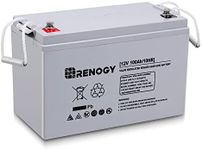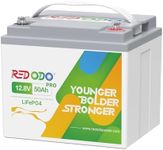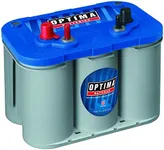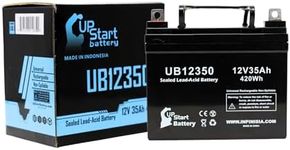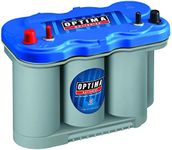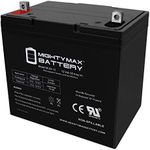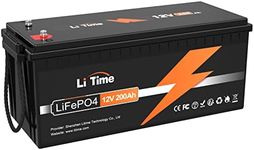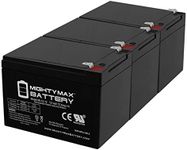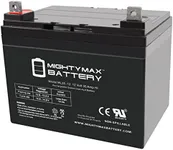Buying Guide for the Best Deep Cycle Batteries For Trolling Motors
Choosing the right deep-cycle battery for your trolling motor is essential for a smooth and enjoyable boating experience. Deep-cycle batteries are designed to provide steady power over a long period, making them ideal for trolling motors that require consistent energy. When shopping for a battery, it's important to understand the key specifications that affect performance, longevity, and compatibility with your motor and boat setup. By focusing on these specs, you can ensure you get a battery that matches your needs and maximizes your time on the water.Battery TypeThe type of deep-cycle battery refers to the technology used inside, such as flooded lead-acid, AGM (Absorbed Glass Mat), or lithium. This is important because each type has different maintenance needs, lifespan, weight, and performance characteristics. Flooded lead-acid batteries are traditional, require regular maintenance, and are usually heavier. AGM batteries are sealed, maintenance-free, and more resistant to vibration. Lithium batteries are lightweight, have a longer lifespan, and charge faster, but are more expensive. To pick the right one, consider how much maintenance you're willing to do, how much weight your boat can handle, and how often you use your trolling motor.
Capacity (Amp-Hours, Ah)Capacity, measured in amp-hours (Ah), tells you how much energy the battery can store and deliver over time. This is crucial because it determines how long your trolling motor can run before the battery needs recharging. Lower capacity batteries (around 50-70Ah) are lighter and suitable for short trips or smaller motors, while higher capacity batteries (100Ah or more) are better for longer outings or larger motors. To choose the right capacity, think about how long you typically use your trolling motor in a single outing and the power draw of your motor.
VoltageVoltage is the electrical potential the battery provides, with common options being 12V, 24V, or 36V. This is important because your trolling motor is designed to work with a specific voltage. Using the correct voltage ensures optimal performance and prevents damage. Most small to medium trolling motors use 12V, while larger or more powerful motors may require 24V or 36V setups, often achieved by connecting multiple batteries. Always check your motor's requirements and match the battery voltage accordingly.
Reserve Capacity (RC)Reserve capacity indicates how many minutes the battery can deliver a specified amount of power (usually 25 amps) before dropping below a usable voltage. This spec is important for understanding how long the battery can provide power under continuous use. Batteries with higher reserve capacity are better for longer trips or when you need to run your motor for extended periods. If you often spend many hours on the water, look for a battery with a higher reserve capacity.
Weight and SizeThe weight and size of the battery affect how easy it is to handle and whether it fits in your boat's battery compartment. Heavier and larger batteries usually offer more capacity but can be harder to move and may not fit in all spaces. Lighter and more compact batteries are easier to handle but may have less capacity. Consider your boat's space and how much weight it can safely carry when choosing a battery.
Cycle LifeCycle life refers to the number of complete charge and discharge cycles a battery can handle before its capacity drops significantly. This is important for long-term value and reliability. Batteries with a higher cycle life will last longer, especially if you use your trolling motor frequently. If you go boating often, look for a battery with a high cycle life to avoid frequent replacements.


